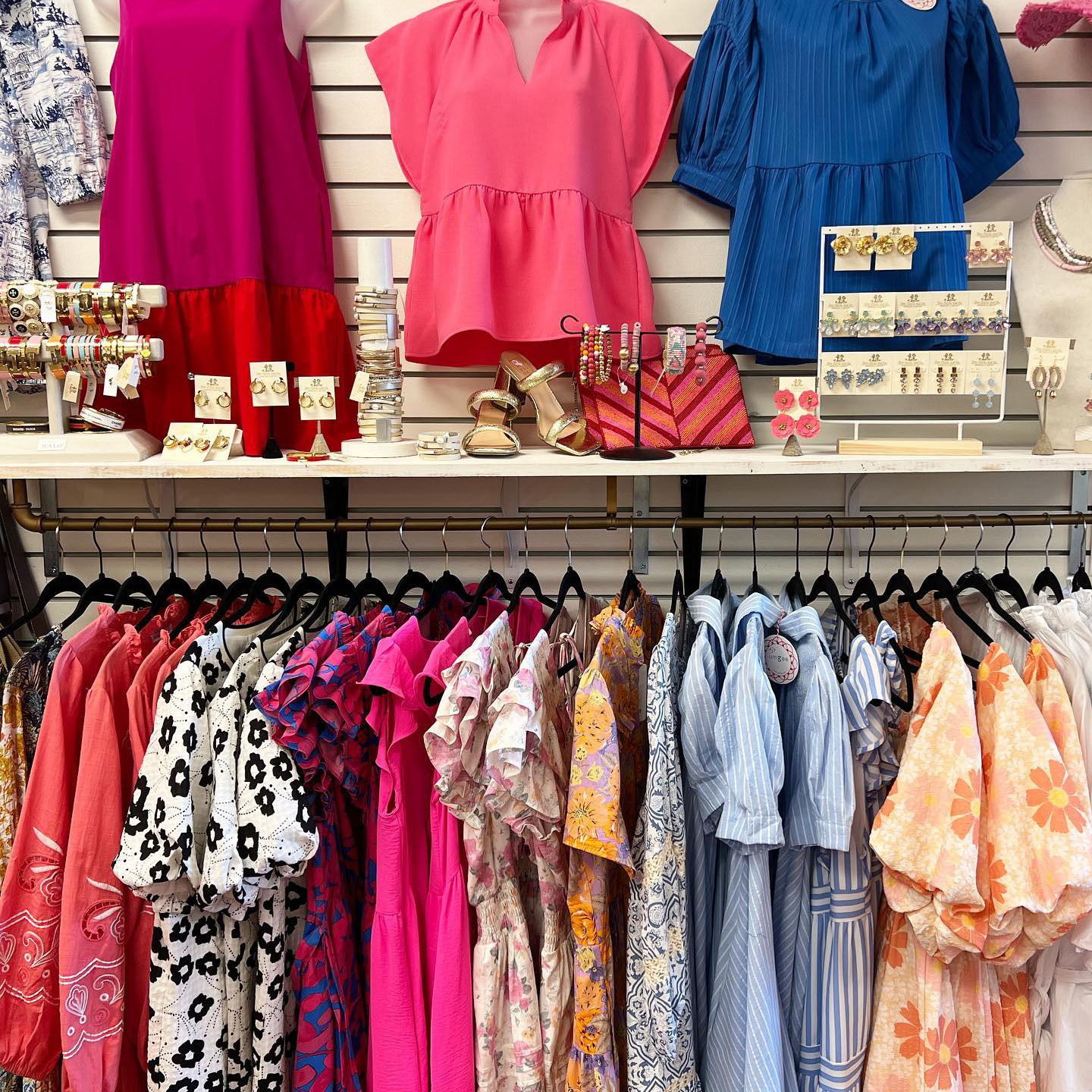Lasting Fashion: How Eco-Friendly Clothing Is Shaping the Future of Style
As the apparel industry encounters boosting scrutiny over its environmental influence, the surge of sustainable style offers an encouraging choice that aligns style with ecological responsibility. Employing ingenious products such as plant-based textiles and recycled fibers, together with innovative methods like electronic and 3D printing, designers are redefining what it means to be trendy in the contemporary age. Simultaneously, the expanding popularity of upcycling and thrift society is fostering a shift in the direction of a round economic situation. Yet, exactly how does this movement absolutely affect the future trajectory of fashion, and what difficulties lie ahead in its prevalent adoption?
Ingenious Lasting Materials
As the fashion business comes to grips with its environmental influence, cutting-edge lasting products have arised as a vital remedy for minimizing environmental impacts. Amongst the most promising materials are those originated from all-natural, sustainable sources, such as natural cotton, hemp, and bamboo. These products not just decrease dependency on nonrenewable fuel sources but additionally decrease dangerous pesticide usage and water intake. Organic cotton, for example, utilizes dramatically much less water than standard cotton and eliminates the demand for poisonous chemicals, therefore preserving soil wellness and biodiversity.
Along with plant-based products, improvements in biofabrication have actually caused the advancement of lab-grown fabrics. Mycelium leather, originated from mushroom roots, presents a naturally degradable and functional choice to pet leather. Its manufacturing leads to significantly lower carbon discharges and water usage, making it a much more lasting option for stylist looking for to align with environmentally friendly practices.
Recycled materials are additionally getting grip, with polyester made from recycled plastic bottles standing for a significant breakthrough. This advancement not just diverts plastic waste from oceans and garbage dumps yet also decreases energy consumption contrasted to generating virgin polyester. Together, these products emphasize the potential for an extra sustainable garment industry, leading the way for eco mindful design and production.
Eco-Conscious Production
Building on the technologies in sustainable materials, the fashion sector is also re-evaluating its manufacturing procedures to better minimize ecological impact. Trick strategies include minimizing water usage, minimizing carbon emissions, and getting rid of unsafe chemicals.
One more vital element is the decrease of toxic chemicals generally utilized in dyeing and ending up fabrics. Eco-conscious manufacturers are changing in the direction of plant-based dyes and waterless dyeing modern technologies, which not only protect regional ecosystems yet additionally boost employee safety. Technologies like electronic printing reduce material waste and energy intake, using a cleaner choice to typical techniques.
In addition, openness and traceability have come to be extremely important. With the advancement of blockchain innovation, companies can currently provide thorough insights into their supply chains, making certain eco friendly and honest methods at each step. This transparency develops consumer trust and urges brand names to keep high sustainability requirements. As the demand for eco-conscious products expands, suppliers are urged to introduce, making sure that the future of fashion is both sustainable and fashionable.
The Rise of Upcycling
Upcycling, a transformative practice in sustainable fashion, involves creatively repurposing disposed of products into new, premium items. This innovative technique not just minimizes waste but additionally lessens the demand for raw products, thus lessening the ecological influence of clothing production. By reimagining and rebuilding existing things, developers and style brand names are able to infuse originality into their collections while advertising environmental duty.

Additionally, the upcycling motion has encouraged independent developers and little organizations, who commonly lead in innovation due to their agility and creative thinking. By taking advantage of the abundant availability of extra products, these entities add to a circular economy, demonstrating that style can be both fashionable and sustainable. With upcycling, the market takes substantial strides towards a much more accountable and conscious future.
Thrift Society's Effect
The growing second hand society substantially improves the landscape of lasting style, emphasizing the importance of mindful consumption. This social shift motivates customers to embrace used apparel, therefore lowering the need for brand-new garment production and minimizing ecological effect. Second hand shopping not only prolongs the lifecycle of garments however additionally reduces the carbon impact related to production, transporting, and disposing of apparel.
An go to my blog essential aspect of second hand culture is its democratization of style. By supplying a vast selection of designs from numerous ages at economical costs, second hand stores make style easily accessible to a broader audience. This availability cultivates a sense of originality and creative thinking, as customers mix and match special pieces to curate customized closets without contributing to the fast fashion cycle.
Additionally, second hand society advertises circularity in fashion, aligning with the principles of a round economic climate. As more designers and customers accept second hand culture, the style sector is forced to adapt, incorporating lasting methods to satisfy the growing need for eco-conscious options.

Future Trends in vogue
Style's development is progressively shaped by sustainability-driven initiatives and technological developments. One noticeable trend is the increase of digital style, where online garments can be worn in augmented truth environments, dramatically decreasing textile waste.
In addition, the assimilation of blockchain technology provides brand-new opportunities in openness and traceability, permitting customers to verify the sustainability qualifications of their garments. boutique fashion. This makes certain accountability in supply chains and promotes honest sourcing practices. 3D printing is yet another advancement that assures to revolutionize manufacturing procedures by enabling on-demand production, therefore decreasing excess stock and waste
As these innovations develop, they are poised to transform the fashion landscape, combining style with sustainability. The future of style, therefore, lies in a smooth blend of modern technology, development, and environmental duty.
Verdict
The change of the fashion sector through lasting techniques suggests a pivotal change in the direction of ecological responsibility. The integration of cutting-edge materials, eco-conscious production techniques, and the embracement of upcycling and second hand society highlights a commitment to minimizing environmental impacts. As these techniques obtain web energy, they redefine the industry's narrative by focusing on lasting and ethical selections. This advancement not only straightens fashion with environmental sustainability but also sets a precedent for future patterns concentrated on duty and technology.
As the read this article style market faces enhancing examination over its environmental effect, the rise of sustainable fashion uses a promising choice that straightens style with environmental responsibility.As the fashion industry grapples with its ecological influence, cutting-edge lasting products have emerged as an important service for lowering environmental footprints. With each other, these materials underscore the capacity for an extra sustainable fashion market, leading the way for ecologically aware style and production.
Structure on the innovations in lasting products, the fashion market is additionally re-evaluating its production procedures to better decrease ecological effect. boutique fashion.Upcycling, a transformative practice in lasting fashion, involves creatively repurposing discarded materials right into brand-new, top notch products